Export basket: Garment’s clout only grows
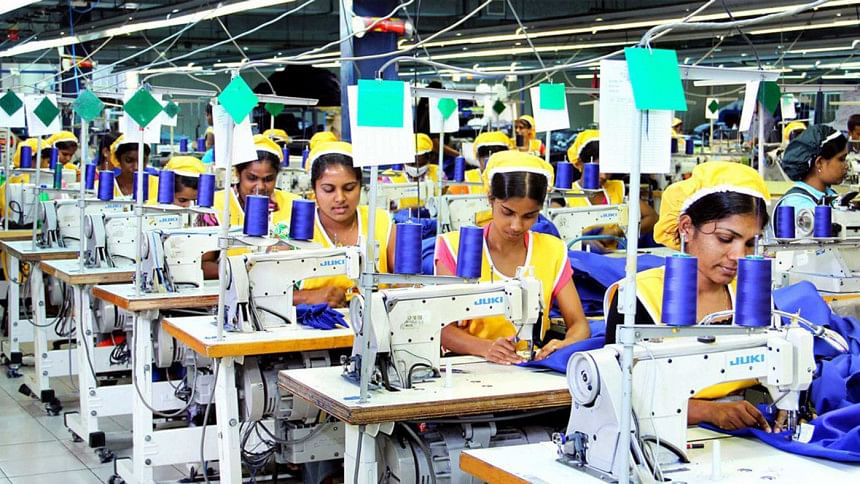
Despite a lot of emphasis by policy-makers on cutting dependence on a single product for exports over the years, the share of readymade garments has increased gradually, putting external sales, jobs, and the economy as a whole at risk.
The garment sector accounted for 68 per cent of the national exports in the fiscal year of 1996-97 and it fetched 82 per cent of the $52 billion export receipts in the last fiscal year, data from the Export Promotion Bureau showed.
A lack of focus on prioritising potential products away from non-garment items, policy discrimination, and inadequate funds are the major factors that have discouraged new exporters, analysts say.
"The risk of over-reliance on just one export item is even greater in the current uncertainty in the global economy," said Rizwanul Islam, a former special adviser for the employment sector at the International Labour Office in Geneva.
A lack of focus on prioritising potential products away from non-garment items, policy discrimination, and inadequate funds are the major factors that have discouraged new exporters, analysts say
"We have seen how the overall economy and workers in the garment sector suffered in the first year of the coronavirus pandemic. The global economy is in danger of entering into a recession again if not already, and the future is uncertain, to say the least."
The export-to-GDP ratio rose for some years: from about 10 per cent in 1996 to 20 per cent in 2012 before falling to 10.7 per cent in 2021, according to Rizwanul.
"This means that the contribution of exports to GDP has declined substantially. What is worrisome is that this has happened during a period of accelerating GDP growth," he said.
"We are impressed by the growth of exports or export earnings, but we are overlooking the fact that they are not driving the growth to the extent they did in the late 1990s and the first decade after 2000."
During the 2008-09 global recession, the garment industry escaped largely unscathed. But questions remain whether it would be able to do the same this time as a global recession looms amid the ongoing war in Ukraine, persisting energy crisis and higher inflation.
Rizwanul highlighted the stagnation of job growth in the garment industry, the biggest employer among industries in Bangladesh.
As the garment industry has to maintain its competitiveness in the export market, it is focusing more on raising labour productivity rather than reaping the benefit of cheap labour.
The result is -- during the past decade or so, labour productivity has become a more important source of output growth compared to employment growth, whereas the opposite was the case from 2005-06 to 2010, said Rizwanul.
"Job growth has stagnated and I doubt if any additional employment has been generated in the industry in the last 10 years or so."
Md Saiful Islam, president of the Metropolitan Chamber of Commerce and Industry, called for a risk fund or export protection scheme from the government to give export diversification a leg up.
His argument is exporters in the country want to invest in the traditional products to avoid risks. So, there is hardly any scope for innovation, which is essential for export diversification.
"In the absence of funds under guarantee schemes, a potential sector could sink, like the shipbuilding industry," said Islam, who is also engaged in the shipbuilding industry.
According to Saiful, the government has enough policies for product diversification but the effectiveness of the policies is rare.
There is a lack of initiative for policy implementation, he said, adding that a small export basket poses huge risks.
"The private sector would not embrace the risk of export diversification until they get funds along with policy support," said the MCCI chief.
Ferdaus Ara Begum, chief executive officer of the Business Initiative Leading Development (BUILD), a think-tank, says some sectors have increased their export volume.
"However, they have not been able to compete with the garment sector when it comes to capturing the share in the export market."
Ferdaus names three sectors -- plastics, leather and light engineering.
Despite the pandemic, she says, the export volume of light engineering increased around 40 per cent.
She, however, admits that entrepreneurs have never thought of or looked into many other potential sectors.
The BUILD, a public-private dialogue platform, has found 25 to 30 types of policy differences between the garment and other sectors that stand in the way of exploring the potential in the global market.
One of the policy inconsistencies is that other sectors are not getting the facilities of the bonded warehouse like that of the garment industry.
After much persuasion from the business community, the government has extended the bonded warehouse facilities to the leather industry. Under the facility, export-oriented industries can import raw materials duty-free.
Similarly, unlike the garment industry, other export-oriented industries can't subcontract their work.
On many occasions, the authorities have imposed burdens on diversified product manufacturers instead of extending support, Ferdaus said.
M Masrur Reaz, chairman of the Policy Exchange of Bangladesh, another private sector think-tank, says Bangladesh has spent 40 years to make a single product competitive globally.
Bangladesh has begun working with 25 to 30 non-garment products simultaneously but the efforts did not bring any good, according to the former economist of the World Bank Group.
This prompted Reaz to suggest prioritising two or three products in order to help them make a mark in the global market.
He also pointed out the country's failure to attract a significant level of foreign direct investment since it is depriving Bangladesh of utilising technological advancement.
Poor logistics is another area of concern.
"Some countries like Vietnam, India, Indonesia, and Thailand, are trying to raise competitiveness by making the best of technological advancement. But we have not been able to do so yet," added Reaz.

 For all latest news, follow The Daily Star's Google News channel.
For all latest news, follow The Daily Star's Google News channel. 

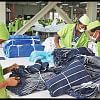
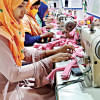
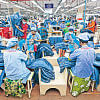

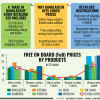

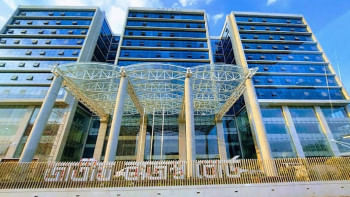
Comments